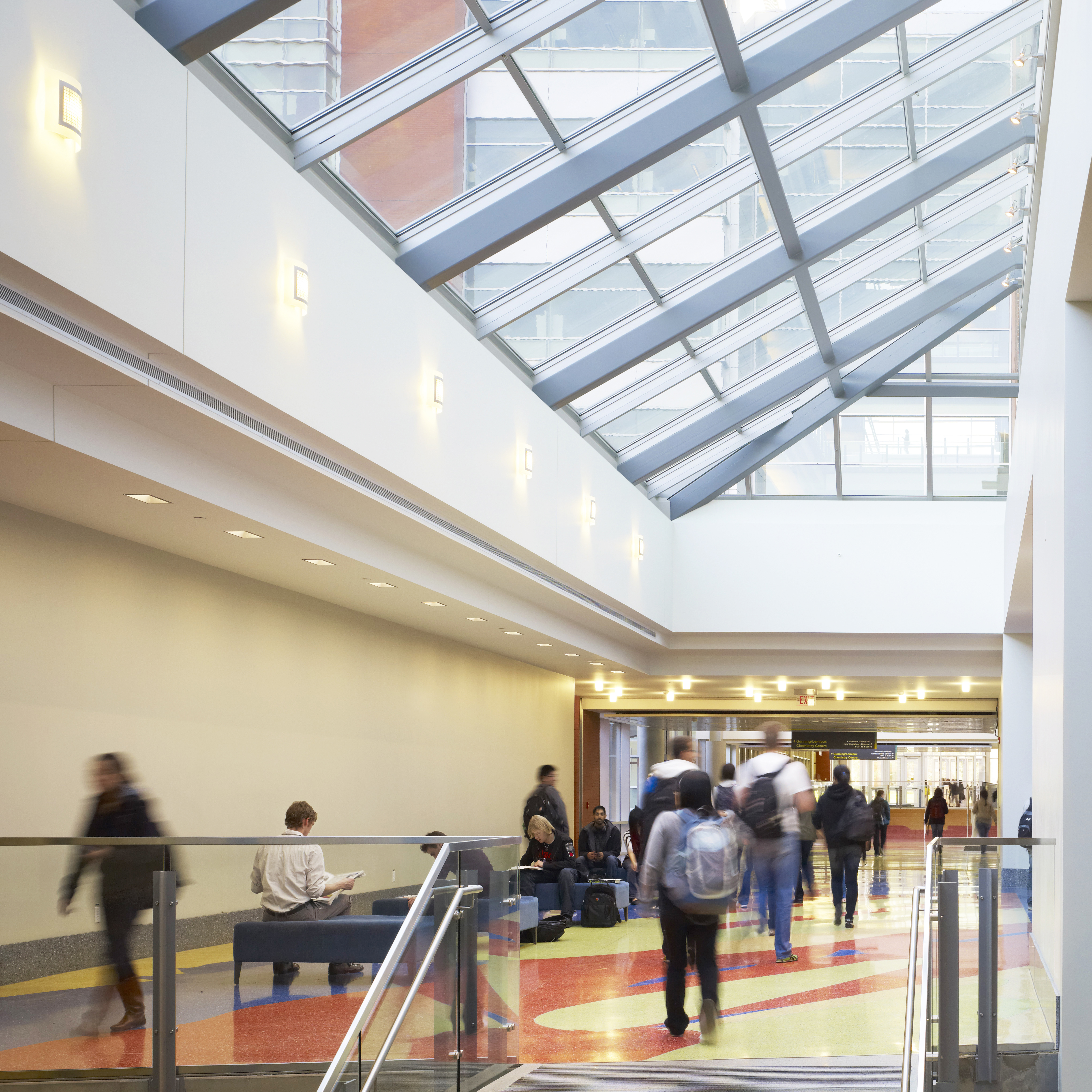People Counters

2015 | North Campus
People counters have been applied to North Campus as part of the university's building automation systems, operational management, environmental targets and long-term facilities planning. Knowing which areas are frequently used and which are not allows the university to reduce energy, allocate staff resources to higher use areas, minimize unnecessary costs and identify space opportunities.
Environmental Impact
- Reduced cleaning of unused rooms reduces chemical use and redirects staff resources.
- Lighting, heating, cooling and ventilation is lowered in empty rooms, reducing GHG emissions.
- Data helps inform how the university can reduce its physical footprint, which results in positive local and global impacts.
Innovation & Technology
- Data is collected by detecting a person's body heat against the background temperature and the direction it moves—in or out of the space.
- Meaningful patterns in the data paired with projected campus needs allows for improved facilities planning and possible reductions in capital costs for new buildings.
Estimated Savings
- Reduction in mechanical system use extends the equipment life and lowers the number of small maintenance costs which add up significantly over time.
- Payback periods vary with each building depending on the age of the heating, ventilation and air conditioning (HVAC) system.